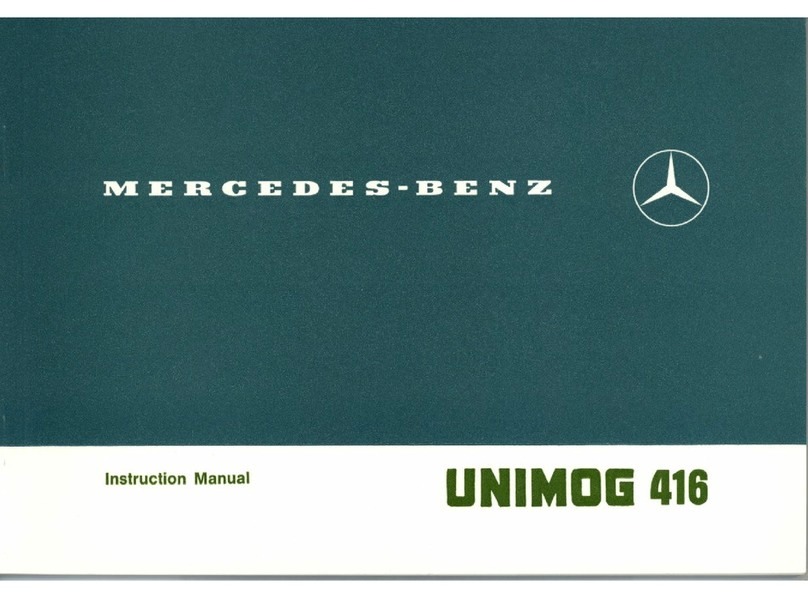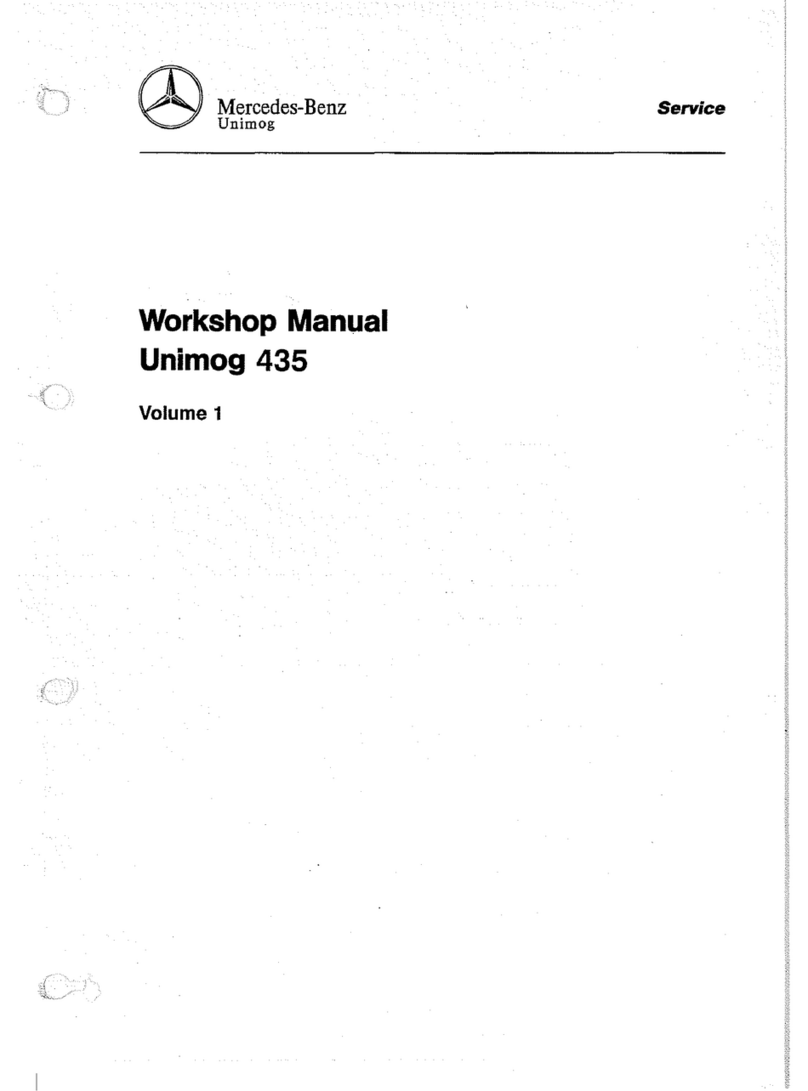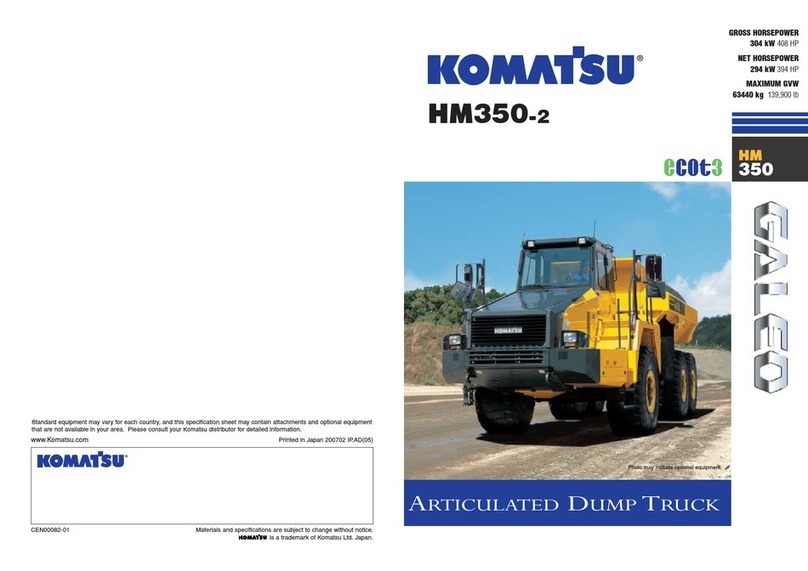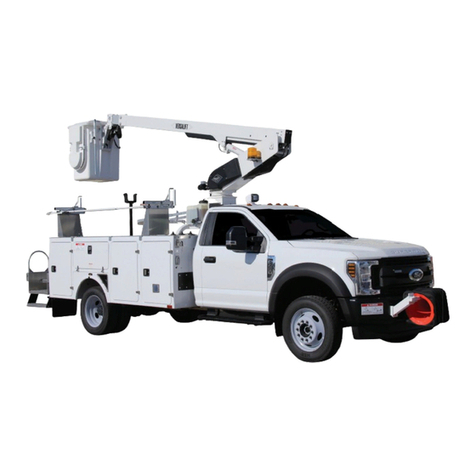
Chassis and underbody protection
The Unimog's chassis and underbody have
been treated with a special dual-layer protec-
tive coating.
This dual-layer protection consists of a pene-
trating wax (Carlofon 3650) and an under-
body protection wax (Carlofon 4941). The
penetrating wax improves the anti-corrosion
protection on moving parts and at gaps, joints
and overlaps. The underbody protection wax
permanently seals the chassis.
Maintaining the anti-corrosion protec-
tion
To maintain the anti-corrosion protection,
please observe the following:
RDo not clean the vehicle for the first time
until at least 4 weeks after it has been
delivered.
RWhen using a high-pressure cleaner to
clean the chassis and the underbody, the
water temperature may not exceed 40 †
and the water pressure may not exceed
30 bar. Make sure that the distance
between the vehicle and the nozzle is at
least 30 cm.
ROnly use a pH-neutral cleaner, not alkaline
or acidic products.
RDo not use any petrol-based substances,
rape seed oil, petrol, diesel or other sol-
vents. They can cause the dual-layer pro-
tection to dissolve or peel off.
RDo not use any additional anti-corrosion
agents.
RWhenever the vehicle is used in extreme
conditions, remove all traces of corrosive
substances with water afterwards.
Particularly critical locations in which these
corrosive substances accumulate are:
-on the underbody
-in the wheel arches and the steps
-on the spring assemblies
-on the drive train
-between cab and platform or mounted
equipment
-in the cab interior
RClean the Unimog at least once a week.
RThe engine compartment can be treated
using a special sealant (AP1505).
RAfter cleaning, check the chassis and
underbody protection and touch it up
where necessary.
These measures will help to prevent mechan-
ical or electrical components from malfunc-
tioning.
Chassis
The following components should be cleaned
regularly:
Rfront flap (U 300/400/500)
Rcab
Rplatform
Rcab underbody (U 20)
Rcab support frame (U 300/400/500)
Rcondenser, oil cooler (U 20)
Rwheel arches
Rvehicle underside
Cleaning equipment settings
Water temperature: max. 40 †
Water pressure: max. 30 bar
Nozzle distance: min. 30 cm
8Chassis
Cleaning the vehicle







































